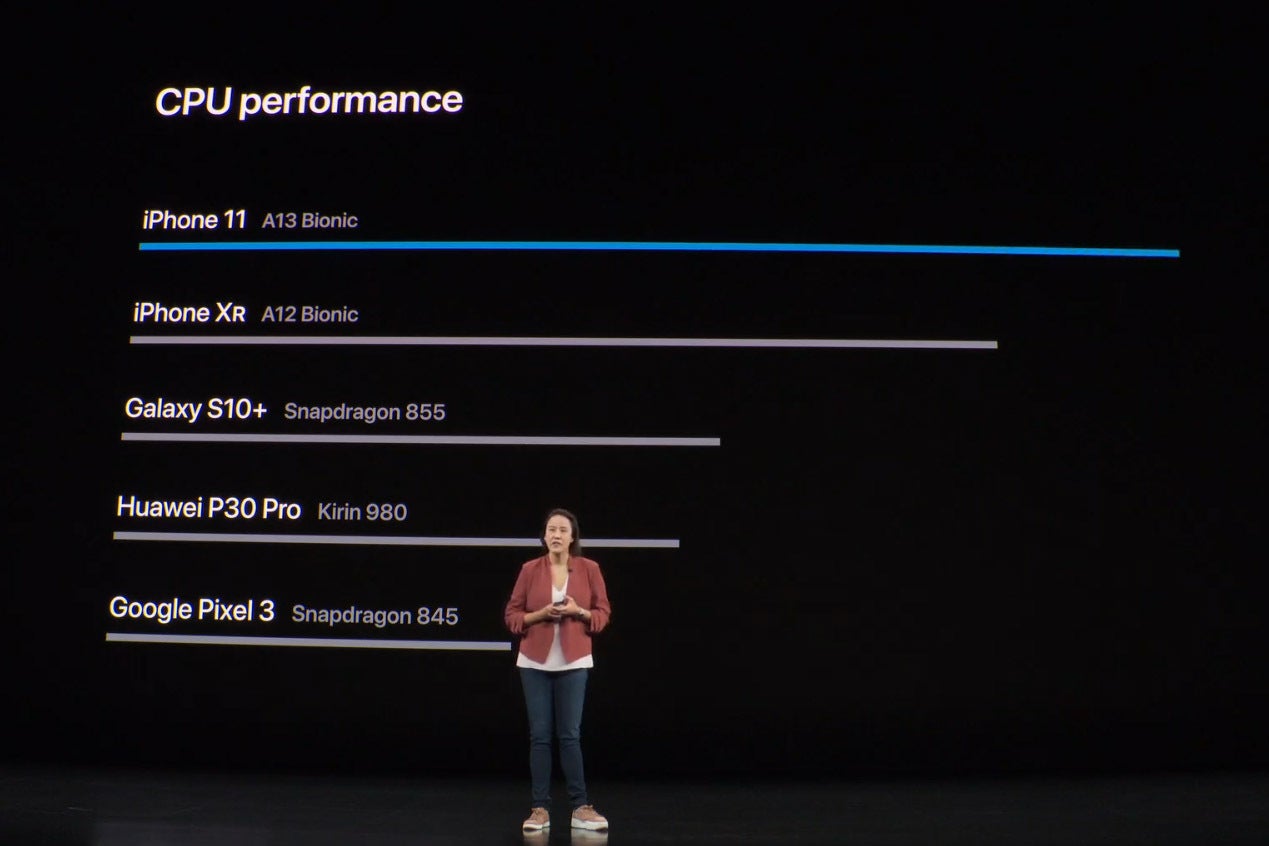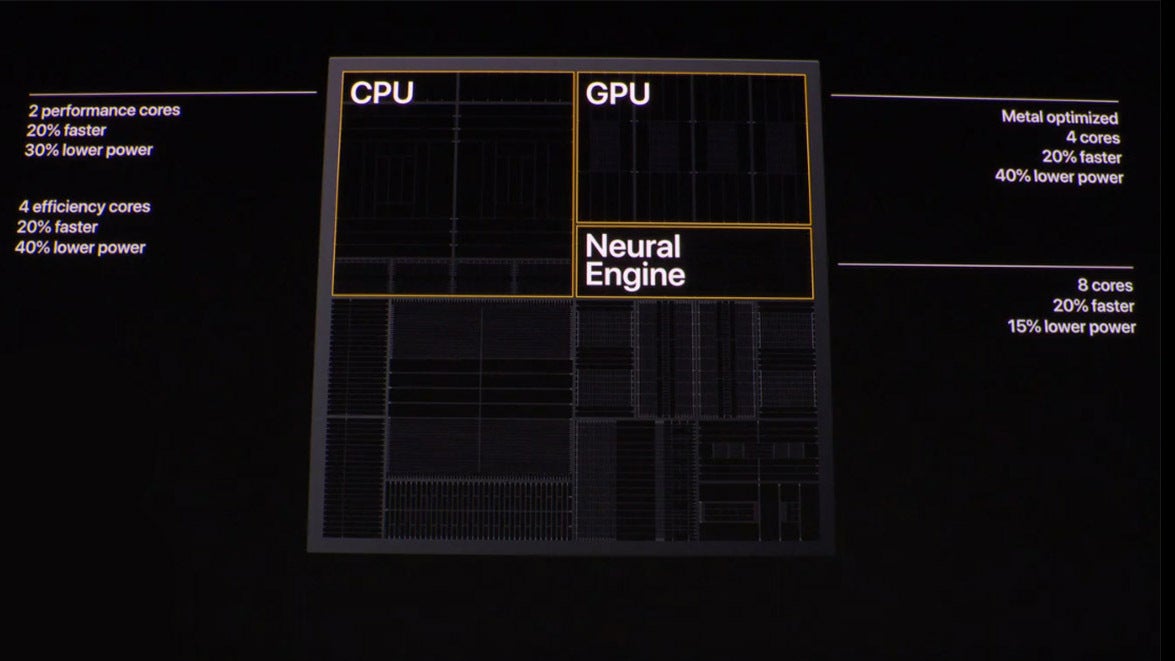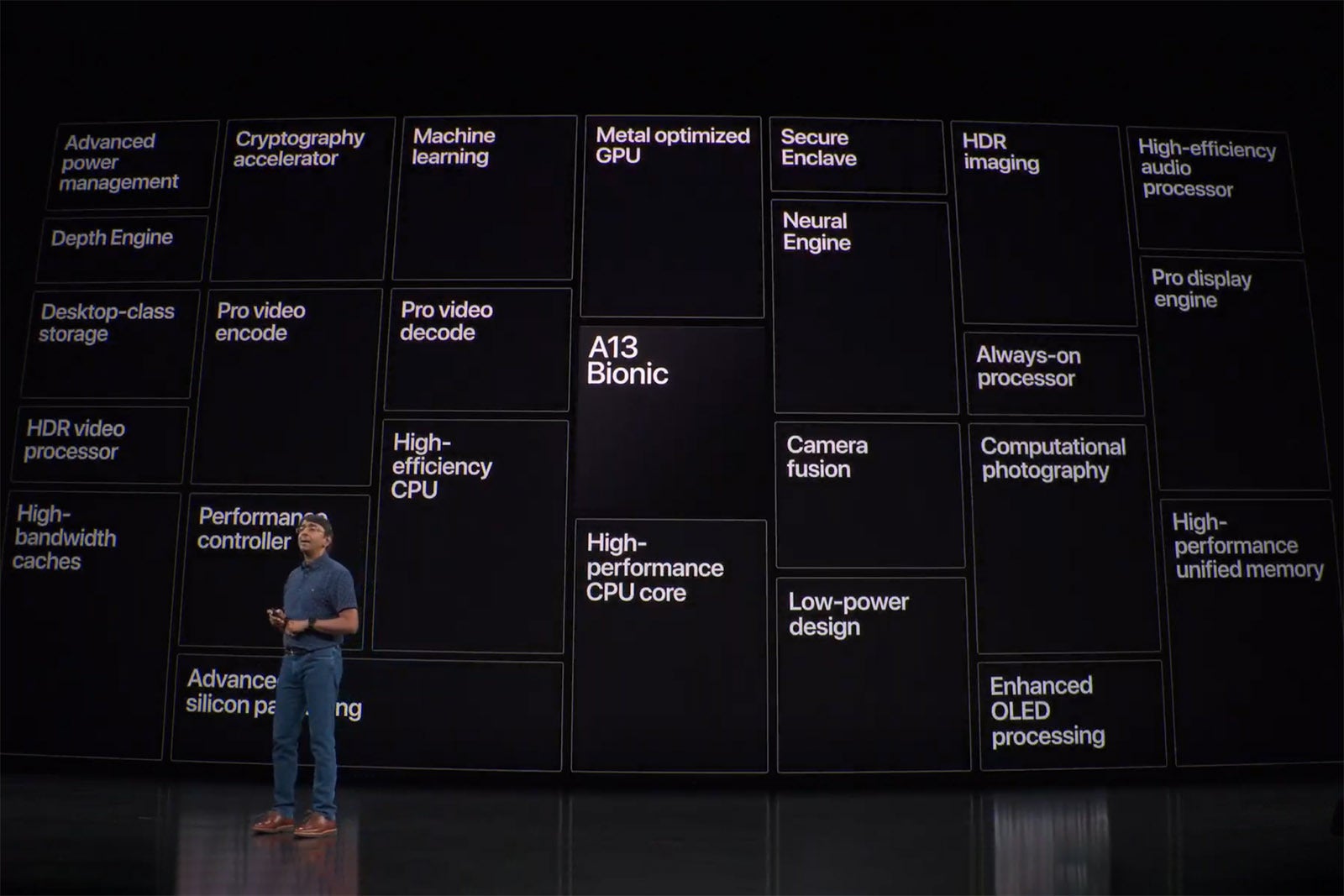Apple A13 Bionic: closer look at the world's most powerful smartphone chip

At the heart of an iPhone is a special chip, one made entirely by Apple, and so far, in the last few years, those chips have been competing only with themselves in the race for the fastest processor on a phone.
So it comes as no surprise that this year, with the new Apple A13 Bionic, Apple has once again extended its lead over the ubiquitous Qualcomm Snapdragon 855 found on most Android phones. Not a tough task considering that last year's Apple A12 already had faster performance than the Snapdragon 855, but still worth mentioning.
What Apple has achieved this year is another significant leap not only in performance, but also in efficiency as the A13 is at the core of why the iPhone 11 series are the longest-lasting iPhones ever made.
So before going into the details, let's quickly take a look at just how fast exactly the A13 is:

The chart comes courtesy of Apple and summarizes the performance of the A13. Notice the Snapdragon 855, the Kirin 980, and the Snapdragon 845 trailing way behind. In fact, the Snapdragon 845 performance is nearly half that of the new A13.
Apple A13 Bionic Highlights
Let's take a look at the Apple A13 Bionic highlights:
- It has 8.5 billion transistors
- Uses advanced, second-generation 7nm process
- It features 4-efficiency CPU cores, used most of the time to get great battery life
- Hundreds of voltage domains, turning only select parts of the chip to achieve great efficiency
- Lower Power efficiency: most efficient chip today, up to 20% better efficiency than A12
- CPU and GPU up to 20% faster performance
- Best sustained performance ever on an Apple chip
- Machine learning, capable of 1 trillion operations per second

Power Efficiency
The big focus with the A13 is on power efficiency.
The new chip uses second-generation, advanced 7 nanometer process to achieve that, but it is not just the process and the transistors, but the way Apple has optimized the architecture by using 4 efficiency (low-power) CPU cores for many daily tasks.
Another interesting technique that the company uses is that it can turn up only specific parts of the chip for a specific task (it uses hundreds of voltage domains for this), again achieving higher efficiency.
Everything combined, the new A13 achieves the following in terms of numbers:
- 2 performance CPU cores are 20% faster, use 30% less power compared to A12
- 4 efficiency CPU cores are 20% faster, use 40% less power
- GPU has 4 cores and is 20% faster, uses 40% less power
- Neural Engine has 8 cores and is 20% faster, uses 15% less power

Machine Learning
Then, there is machine learning.
Apple claims the A13 is the best machine learning platform in any smartphone thanks to a number of improvements. The major one is new dedicated accelerators in the CPU that allow the phone to carry out one of the most common machine learning tasks (matrix multiplication) 6 times faster. Overall, the CPU alone has a capacity of 1 trillion operations per second.
It comes with a Machine Learning Controller, which allows ML models to be scheduled across the CPU, GPU and the Neural Engine, making this a fully integrated platform that can balance efficiency and performance. It can be used for on-device natural language processing, image classification in photos and videos, character animation in AR apps, and a ton more.

Final Words
Apple has the unique advantage of what it calls "owning the entire vertical stack", meaning that it is the one making the software, the one making the system hardware and the one making the chip design, so it can optimize everything from the tiny transistor to the little bits of code.
We should also say that the above numbers are the official ones provided by Apple. There is no reason to doubt them: previous fact-checking has shown that they are even a bit conservative, but we are looking forward to testing the Apple A13 Bionic ourselves in benchmarks and real-world use.











Things that are NOT allowed: